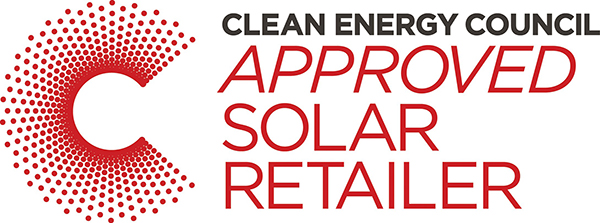Solar
For Home
Read on to discover how you can harness the power of the sun.
Solar For Home
Solar For Home
Read on to discover the top 8 benefits of choosing solar power for the home!
Read on to discover the top 8 benefits of choosing solar power for the home!

The Financial Benefits
of Solar Power
The Financial Benefits
of Solar Power
Significantly Reduce Your Power Bills
With electricity prices sky-rocketing at a rate well above inflation, the benefit of a solar power system continues to increase to the point where you can now choose reliable products from the industry’s leading manufacturers and still see a return on your money in 2 – 3 years.
As an example, a 5kW solar system can make a serious dent in a $1000 quarterly power bill, even if you only use 70% of the solar power as it is generated:
Save more than $50,000 over the life of an average system
Assuming you are able to use around 70% of the solar power in the home as it is generated across the day, you will be able to save over $50,000 over the 25-year life of a 5kW solar system, which is about the average sized solar system for a home in South Australia.
Let’s dig into the numbers to see why millions of Australian households have made the decision to install solar power :Note: these figures are generalised, every home will have different scenarios.
• Total Value: $11,000
• Government Incentive: Approx. $3000
• Investment: $8000 for a top of the range system
• Yearly Power Bill Savings: Around $2000
• Payback Time: Around 4 years
• System life: Panels have a 25-year warranty
• Total Profit over 25 years: $54,000!!!
• Stop worrying about sky-rocketing power prices
Have a look at your power bill to see how much you pay for your electricity. If you have time-of-use billing, the average benefit of a solar system is normally around 35 cents per kWh.
Using this number and multiplying the estimated system output with how much you pay for your power, you can see that with an investment of around $6,000-$8,000 for a 5kW solar system you can save up to & over $500 a quarter, and an impressive profit of $54,300 over 25 years on your power bills! This number can be even greater if you are using most of your solar power during the peak billing period of 2 pm to 8 pm.
Stop worrying about sky-rocketing power prices
Generating your own clean solar energy limits your exposure to inevitable price increases. Incredibly, energy prices have risen 3 times faster than everything else since the 80’s, and unfortunately, a political solution seems a long way off.
Increase your home’s value.
To increase the value of your home, studies have shown that your system must use quality components. There are so many issues with the cheaper end of the solar market that potential buyers will often not see a cheap solar system as an added benefit, in fact, it can actually have the opposite effect.
A good quality solar system will generally provide a reliable source of free electricity for the new owners for decades, backed up by warranties that are transferred to the new owner in case something goes wrong. A solar power system can also help the environmental rating of your property, and attract environmentally conscious buyers.
Generous Government Incentives.
Improve Your Lifestyle
Our summers are getting really hot! With record-high temperatures being recorded nearly every year, many households across Australia are looking to install air conditioning to help keep cool. Air conditioners use a lot of power, sometimes as much as the rest of the house combined.
Installing solar power can help you and your family improve your lifestyle without having to worry about huge power bills. Solar power works very well with air conditioners and pool pumps because they tend to be used over summer during the day-time.
With a little energy management, you can not only reduce your power bills but use your appliances more often to help increase your lifestyle. Our smart solar systems come with full consumption monitoring, allowing you to compare the output of your solar system with the amount of electricity being used in the home.

The Environmental Benefits
of Solar Power
The Environmental Benefits
of Solar Power
Reduce Your Carbon Footprint
Contribute to Australia’s Renewable Energy Target (RET).
The Smallscale Renewable Energy Scheme creates a financial incentive for households, small businesses and community groups to install solar power systems. It does this by legislating demand for Small-scale Technology Certificates (STCs). STCs are created for these systems at the time of installation, according to the amount of electricity they are expected to produce or displace in the future. For example, the SRES allows eligible solar PV systems to create, at the time of installation, STCs equivalent to the expected system output between the time of installation and the end of the RET scheme in 2030.

